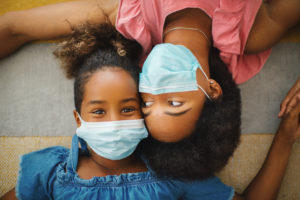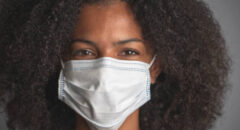
According to the Centers for Disease Control and Prevention (CDC), children generally appear to be less severely impacted by COVID-19 than adults. But a new study from Children's Hospital Los Angeles (CHLA) shows that the pandemic could be affecting children's health in unexpected ways.
The study reveals a surge of children being admitted to the hospital with diabetic ketoacidosis.
What is Diabetic Ketoacidosis?
Diabetic ketoacidosis, or DKA, is life-threatening. In the study release Lily Chao, MD, MS, Interim Medical Diabetes Director at CHLA says "DKA happens when insulin levels in the blood drop too low for too long. Insulin helps the body utilize glucose. So when there's not enough insulin, the body starts breaking down fat as a source of energy."
This process, she says, causes dangerously high levels of acids in the blood.
If left untreated, this can lead to a build-up of fluid around the brain, coma, or even death. "Kids are coming in with dehydration and DKA. But DKA is preventable and reversible if we treat it early and appropriately," says Dr. Chao, who is the lead author on the paper.
Why the Increased Incidence of Type 2 Diabetes with DKA?
It is not clear if the rise in DKA comes from previous COVID-19 exposure. However, in the release Senta Georgia, Ph.D., an investigator in The Saban Research Institute of CHLA, says, "there is definitely a link between COVID-19 and diabetes." This is particularly problematic for Latinx, and Black youth disproportionately impacted by obesity and type 2 diabetes—risk factors that place these youth at significant risk for poor outcomes. "We don't know whether [COVID-19] infects insulin-secreting cells in the pancreas," Georgia says. "There are some reports of a link between COVID-19 and diabetes in adults, but no pediatric studies have been published to date."
What Are the Signs of DKA?
Diabetic ketoacidosis usually develops slowly, with symptoms similar to high blood sugar—dry mouth, frequent urination, and ketones in the urine. As the condition worsens, symptoms include fatigue, dry and flushed skin, nausea, vomiting, and abdominal pain.
You may also have difficulty breathing, a fruity odor on the breath, and confusion. DKA can cause loss of consciousness and lead to coma and even death. Therefore, DKA must be treated as a medical emergency.
Can You Prevent DKA?
Knowing the signs of DKA is the first step in prevention. But knowing what to do when your child is sick can also help prevent DKA. The American Diabetes Association suggest the following tips for sick day management:
- Drink lots of fluids. If having trouble keeping water down, give small sips every 15 minutes or so throughout the day to avoid dehydration.
- If experiencing blood sugar below 70 mg/dl or below target range, give 15 grams of simple carbs that are easy to digest, such as honey, jam, Jell-O, hard candy, popsicles, juice, or regular soda. Re-check blood sugar in 15 minutes to make sure the levels are rising. Check blood sugar extra times throughout the day and night (generally, every 2-3 hours; if using a CGM, monitor frequently).
- If blood sugar has registered high (BG greater than 240mg/dl) more than two times in a row, check for ketones to avoid DKA.
- Call your doctor's office immediately if your child has medium or large ketones (and if instructed—trace or small ketones).
- Be aware that some CGM sensors (Dexcom G5, Medtronic Enlite, and Guardian) are impacted by Acetaminophen (Tylenol). Check with finger sticks to ensure accuracy.
- Wash your hands and clean injection/infusion and finger-stick sites with soap and water or rubbing alcohol.
The sick day management tips above are general guidelines. Work with your child’s health care provider to develop a personalized sick-day plan before your child gets sick.









